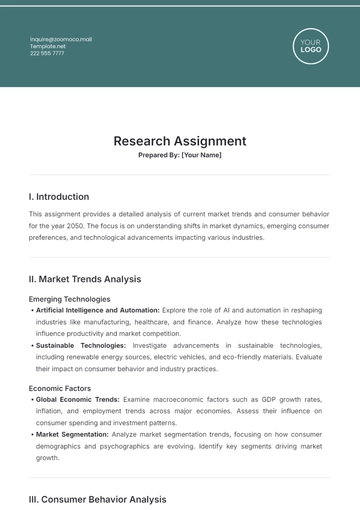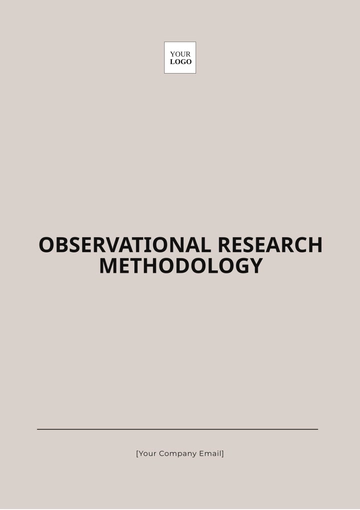Free Basic Research

Conducted By: [YOUR NAME]
I. Abstract
The exploration of our solar system's planets serves as a fundamental quest to unravel the mysteries of cosmic evolution and our place within the vast expanse of the universe. This research endeavors to delve deeply into the origins, compositions, and unique characteristics of each planet in our solar neighborhood. Through meticulous analysis and synthesis of existing knowledge, the aim is to construct a comprehensive understanding of the Solar System's architecture, shedding light on the intricate processes that have shaped celestial bodies over billions of years.
By unraveling the complexities of planetary formation and evolution, this research not only enriches our comprehension of Earth's origins but also offers profound insights into the potential habitability of distant worlds beyond our immediate cosmic backyard. Such insights could revolutionize our perceptions of life's existence elsewhere in the universe, igniting imaginations and driving humanity's quest for exploration and discovery.
II. Introduction
The study of planets within our solar system serves as a captivating window into the cosmic drama that has unfolded over billions of years. Each planet, with its own unique history and characteristics, holds clues to the grand narrative of celestial evolution. By meticulously examining these celestial bodies, scientists endeavor to unravel the mysteries surrounding the formation and development of our solar system.
Beyond merely satisfying intellectual curiosity, delving into the intricacies of planetary systems yields invaluable insights into broader astronomical phenomena. From the tumultuous birth of stars to the gravitational dances of planetary bodies, the study of planets provides a lens through which we can glimpse the dynamic forces that shape galaxies and nebulae throughout the cosmos.

Moreover, the quest to understand planetary systems extends far beyond the confines of academic inquiry. It holds profound implications for humanity's existential questions about our place in the universe and the potential for life beyond Earth. By scrutinizing the conditions necessary for habitability on other celestial bodies, scientists not only unravel the mysteries of our own origins but also contemplate the tantalizing prospect of encountering extraterrestrial lifeforms.
In essence, the study of planets serves as a cornerstone of astronomical exploration, offering both intellectual enrichment and existential contemplation. By probing the depths of our solar system and beyond, we embark on a journey of discovery that transcends the boundaries of space and time.
III. Methodology
The pursuit of a comprehensive understanding of the planets within our solar system demanded a rigorous and multifaceted approach. This section outlines the methodologies employed to gather, analyze, and interpret data crucial to the research objectives.
Literature Review: A thorough examination of existing literature served as the foundation of this research endeavor. Extensive review encompassed scholarly articles, academic journals, and authoritative publications from esteemed institutions such as NASA, the European Space Agency (ESA), and other reputable sources within the field of planetary science. This comprehensive review provided valuable insights into established theories, methodologies, and empirical findings, serving as a framework for further investigation.
Data Collection: The acquisition of data from diverse and authenticated sources constituted a pivotal aspect of this research. Data pertaining to planetary compositions, atmospheric properties, orbital dynamics, and other pertinent parameters were collected from a myriad of sources, including archival records from space missions, remote sensing observations, and telescopic measurements. Primary sources such as NASA's Planetary Data System (PDS) and ESA's Planetary Science Archive (PSA) were instrumental in providing high-quality, validated datasets for analysis.
Space Missions and Explorations: Incorporating insights gleaned from recent space missions and exploratory endeavors was paramount to augmenting the breadth and depth of this research. Findings from landmark missions such as the Mars Rover expeditions, the Cassini-Huygens mission to Saturn, and the Juno mission to Jupiter were leveraged to enrich the empirical foundation of the study. These missions provided firsthand data and observations, offering unparalleled insights into the geological, atmospheric, and environmental characteristics of distant planetary bodies.
Analytic Models and Computational Simulations: Complex analytic models and computational simulations served as indispensable tools for data analysis and interpretation. Leveraging cutting-edge computational techniques, mathematical models were developed to simulate planetary processes, atmospheric dynamics, and orbital mechanics. These simulations enabled researchers to elucidate complex phenomena, test theoretical hypotheses, and derive meaningful insights into the underlying mechanisms governing planetary behavior.
In concert, these methodological approaches facilitated a comprehensive and systematic exploration of the planets within our solar system, empowering researchers to unravel the intricacies of celestial phenomena and deepen our understanding of the cosmos.
IV. Planetary Characteristics
A. Atmospheric Composition
Planet | Atmospheric Composition (%) |
|---|---|
Mercury | Oxygen (42%), Sodium (29%), Hydrogen (22%), Helium (6%) |
Venus | Carbon Dioxide (96.5%), Nitrogen (3.5%) |
Earth | Nitrogen (78%), Oxygen (21%), Argon (0.93%) |
Mars | Carbon Dioxide (95.3%), Nitrogen (2.7%), Argon (1.6%) |
Jupiter | Hydrogen (90%), Helium (10%) |
Saturn | Hydrogen: 96%, Helium: 3%, Methane: 0.4%, Ammonia: 0.02% |
Uranus | Hydrogen: 83%, Helium: 15%, Methane: 2.3% |
Neptune | Hydrogen: 80%, Helium: 19%, Methane: 1.5% |
B. Average Distance from the Sun and Average Temperature
V. Discussion
The culmination of this study unveils a rich tapestry of planetary diversity within our solar system, highlighting the multifaceted nature of celestial bodies and their intrinsic characteristics. From the scorching deserts of Mercury to the icy expanse of Neptune's realms, each planet embodies a unique set of attributes that shape its identity and influence its potential for habitability.
Planetary Diversity: The analysis reveals a spectrum of planetary characteristics, encompassing variations in distance from the sun, atmospheric composition, surface conditions, and orbital dynamics. This diversity underscores the complex interplay of geological, atmospheric, and astrophysical factors that govern the evolution of celestial bodies.
Implications for Habitability: Central to the discussion is the pivotal role played by these distinct planetary features in determining the potential habitability of a celestial body. Factors such as atmospheric composition, surface temperature, and presence of liquid water emerge as critical determinants of a planet's suitability to support life as we know it. By elucidating the underlying mechanisms driving habitability, this research lays the groundwork for identifying promising candidates for future astrobiological exploration and colonization endeavors.
Scientific Insights and Discoveries: The comprehensive analysis of planetary properties yields invaluable insights with far-reaching implications for terrestrial and planetary science. By discerning patterns and correlations among planetary characteristics, researchers gain a deeper understanding of the underlying processes shaping planetary evolution. Moreover, the identification of anomalous phenomena and outliers within the dataset serves as a catalyst for further investigation, potentially leading to groundbreaking discoveries in fields such as exoplanetology, astrobiology, and planetary geoscience.
Future Endeavors and Space Exploration: The insights garnered from this study not only deepen our scientific understanding of the solar system but also pave the way for future space exploration endeavors. By leveraging the knowledge gained from planetary analysis, scientists can inform the design and execution of upcoming space missions, targeting specific celestial bodies of interest and maximizing scientific return. Moreover, the identification of potential habitable environments fosters optimism for the discovery of extraterrestrial lifeforms and fuels humanity's quest for cosmic exploration and discovery.
In summary, the findings of this study not only underscore the remarkable diversity of planets within our solar system but also illuminate the profound implications of planetary characteristics for habitability, scientific inquiry, and space exploration. By unraveling the mysteries of our cosmic neighbors, we embark on a journey of discovery that transcends the boundaries of our home planet and expands our horizons to the farthest reaches of the universe.
VI. Conclusion
To conclude, our exploration of the planets within our solar system reveals a rich tapestry of celestial diversity, each world offering a unique glimpse into the cosmic drama of creation and evolution. Through meticulous analysis of planetary characteristics, from atmospheric compositions to surface conditions, we deepen our understanding of the intricate processes that have shaped our cosmic neighborhood over billions of years.
Furthermore, this research emphasizes the profound implications of planetary studies for our understanding of cosmic evolution, the potential for habitability beyond Earth, and the advancement of scientific inquiry and technological innovation. As we venture further into the realms of exploration and discovery, continued research in this field promises to unlock new frontiers of knowledge and propel humanity into an era of unprecedented understanding and exploration of the cosmos.
In summary, studying the planets in our solar system not only advances scientific knowledge but also kindles human curiosity about the secrets of the cosmos and sparks our imaginations. Let us go out on this voyage of cosmic discovery with fresh enthusiasm and unflinching determination, as we stand on the cusp of new discoveries.
VII. References
NASA (2021). Solar System Exploration. NASA Science.
European Space Agency (2021). Space Science. ESA Science & Exploration.
Lissauer, J.J., Dawson, R.I., & Tremaine, S. (2014). Advances in planetary system science.
Russell, C.T., & Raymond C. (2013). The Dawn mission to minor planets Vesta and Ceres.
Seager, S. (2010). Exoplanet Atmospheres: Physical Processes.
- 100% Customizable, free editor
- Access 1 Million+ Templates, photo’s & graphics
- Download or share as a template
- Click and replace photos, graphics, text, backgrounds
- Resize, crop, AI write & more
- Access advanced editor





























